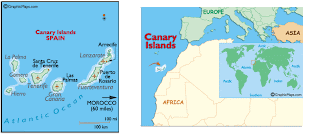Aeoniums- and the name tells you a lot, as it means immortal -- flourish madly on the Central Coast Their point of origin is the Canary Islands off the NW coast of Africa at around 15 degrees of longitude.
Angel sculpture by Margaret Dunlap
Pineapple sage blooms
Next: the Haphazard Gardener visits dahlias and the SF Botanical Garden in Golden Gate park.
Aeonium arboreum is a resourceful plant when it comes to drought. Not frost proof (though probably would come back from the root, if the frost were brief) . The plant strategy is to grow big and flat, with lots of thin shiny leaves.It easily attains a size of 3 feet across, growing pups under its rosettes at a brisk rate for a succulent. It's motto is "size matters".
 |
| 'Schwarzkopf' |
It's smaller but also prolific, shiny and dramatic, very chic these days as "black" flowers are the "in" thing is Aeonium arboreum var atropurpureum 'Schwarzkopf', or Black also known as Tree aeonium . This one looks great with chartreuse colored succulents. It's all over the place in the Getty Gardens in giant pots, looking very fashionable.
The next plant strategy is a little different. Here is A. tablaforme (like a table.)
from Scientific web. com
Not only is it big, many leaved and flat, but furry. The small hairs all over the leaves are great moisture catchers. (So much so that A. tablaforme rots in captivity rather easily. Water it no more than you would a resting orchid if its inside. Outside in SoCal, along the coast, don't water it. It's perfectly adapted to a maritime climate.) It's reproduction strategy is a little different . It colonizes:
The next one is in here because it's s-oooo pretty. But also furry, colonizing and doing what all these aeoniums do when its going to rain--forming cups of their leaves.
A. glandulosum from Madeira
If you have an appetite for more aeoniums go to the site of a passionate collector, now unfortunately décèdé , at http://www.aeonium.info/ A memorial to Jacques Gaurnalt.It's wonderful for pictures, and can be easily translated by using Bing's sometimes loopy translator.
The last man standing in the drought stakes is not an aeonium at all, but Echeveria setosa from Puebla, Mexico. As you can see it has adapted the furry leaf, and colonizing habit, but its small compared to the aeoniums. Usually not more than 3 or 4 inches across. In this case, size seems to matter less than fatter leaves.(See great botanical drawing at http://www.botanicus.org/title/b11793533 --plate 6 in Addisonia from 1916 published by the NY Botanical )
In fact, many succulents are perfectly capable of subsisting inside with no soil at all, if you put them in the bathroom were they collect water as though it were fog, from the shower.
* * * * *
Incidental intelligence: the most successful new hummingbird plant in the garden is Pineapple sage. Brilliant red. They love it.
Next: the Haphazard Gardener visits dahlias and the SF Botanical Garden in Golden Gate park.









No comments:
Post a Comment